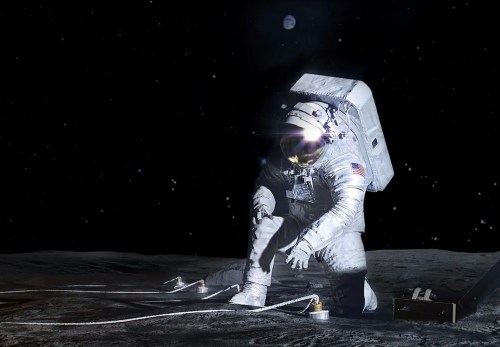
It was almost a decade ago when astronauts aboard the International Space Station sat down for a meal of historical significance as it was the first to include food — albeit only lettuce — grown and harvested in space.
Fast forward to recent times, and the technology for cultivating leafy vegetables aboard the orbital outpost continues to improve. This is good news for NASA as it seeks ways to keep astronauts fed and watered on future deep-space missions that will be unable to carry large food supplies.
This week, NASA announced its latest plan for experimental food-growth systems, revealing that it will send the Lunar Effects on Agricultural Flora (LEAF) experiment to the moon as part of the Artemis III crewed mission, which is currently scheduled for 2026
LEAF, created by Colorado-based Space Lab Technologies, will investigate the lunar surface environment’s effects on space crops and be the first experiment to observe plant photosynthesis, growth, and systemic stress responses in space radiation and partial gravity, NASA said.
The LEAF Beta payload, which features a plant growth chamber with an isolated atmosphere, will protect the plants inside it from excessive lunar sunlight, radiation, and the vacuum of space while observing their photosynthesis, growth, and responses to stress, according to Space Lab. After about a week on the lunar surface, the astronauts will bring back the seedling samples for detailed analysis in laboratory conditions. It won’t be the first time plants have been grown on the lunar surface as China grew a cotton plant there in a short-lived experiment in 2019.
Christine Escobar, Space Lab vice president, described the upcoming research as “a pivotal step toward understanding how we might use agriculture in space to support human crew, paving the way for sustained lunar exploration and even missions to Mars.”
NASA also selected two more science experiments for the Artemis III mission. The Lunar Environment Monitoring Station (LEMS) is a compact, autonomous seismometer suite for long-term monitoring of the moon’s seismic environment, while the Lunar Dielectric Analyzer (LDA) will measure the ability of lunar soil to propagate an electric field, which could aid the search for resources, especially ice.
Editors' Recommendations
- Here are the new spacesuits astronauts will wear for tonight’s Starliner launch
- NASA’s Orion spacecraft has ‘critical issues’ with its heat shield, report finds
- NASA gives green light to mission to send car-sized drone to Saturn moon
- Watch NASA begin testing its Orion capsule for lunar flyby
- What kind of view will ISS astronauts get of the solar eclipse?